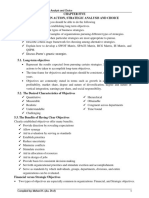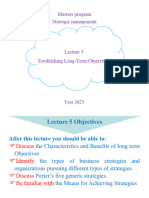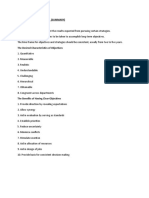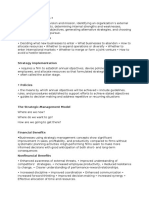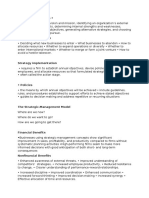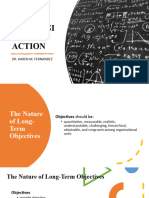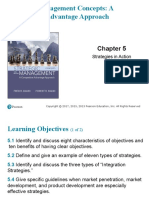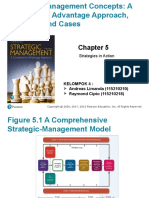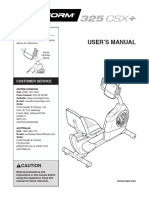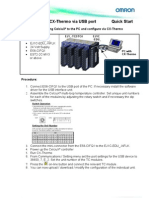0% found this document useful (0 votes)
11 views7 pagesChapter 5
Chapter 5 discusses effective long-term objectives, highlighting characteristics such as being quantitative, understandable, challenging, compatible, and obtainable, which contribute to organizational success by providing clear direction and motivation. It differentiates between financial and strategic objectives, emphasizing the importance of both for short-term viability and long-term growth. The chapter also outlines various integration and intensive strategies, including forward, backward, and horizontal integration, as well as market penetration, market development, and product development, providing guidelines for their effective implementation.
Uploaded by
mohammed.khathami1Copyright
© © All Rights Reserved
We take content rights seriously. If you suspect this is your content, claim it here.
Available Formats
Download as PDF, TXT or read online on Scribd
0% found this document useful (0 votes)
11 views7 pagesChapter 5
Chapter 5 discusses effective long-term objectives, highlighting characteristics such as being quantitative, understandable, challenging, compatible, and obtainable, which contribute to organizational success by providing clear direction and motivation. It differentiates between financial and strategic objectives, emphasizing the importance of both for short-term viability and long-term growth. The chapter also outlines various integration and intensive strategies, including forward, backward, and horizontal integration, as well as market penetration, market development, and product development, providing guidelines for their effective implementation.
Uploaded by
mohammed.khathami1Copyright
© © All Rights Reserved
We take content rights seriously. If you suspect this is your content, claim it here.
Available Formats
Download as PDF, TXT or read online on Scribd
/ 7



